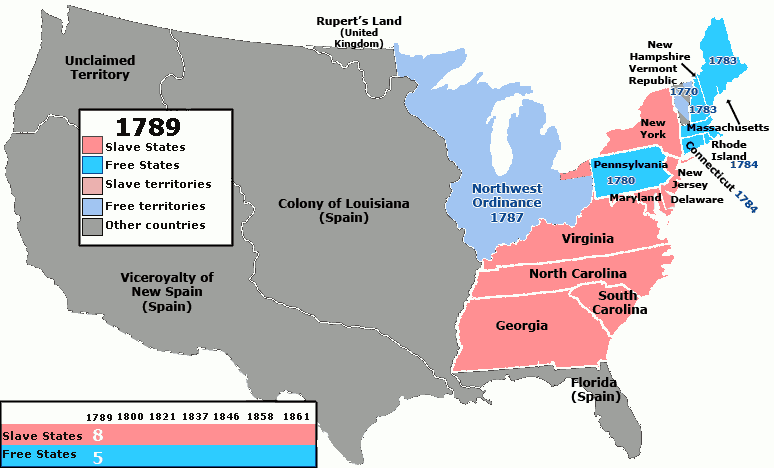
Slavery was the most prominent of the differences that had emerged between the North and the South. Besides the free/slave divide, the two areas of the country had evolved into separate societies.
In this activity, you will examine a series of maps that compare the North and the South. The link below will open in a new window a map showing Union and Confederate states. As you look through the maps, answer the following multiple choice questions, then you will be asked to reflect and outline the essential differences between the two societies. Each question will require you to use a different map, which can be accessed by clicking the different categories on the right side of the screen.
Compare the North vs. the South
The differences in economies meant that both sides had very different political interests. The high amount of manufacturing in the North meant that it wanted to keep a high tariff, which protected goods made there from competition overseas. The South wanted a low tariff.
The South also searched for places to expand because it feared the growing population and state trend. Take a look at the following animation and answer the reflection question that follows.

→ Reflect: Why might a Southerner be concerned about his long term ability to own slaves given the population differences you saw in the first set of maps and the number of free and slave states in the animation? (Hint: Think representation in Congress). Answer with your notes. Interactive popup. Assistance may be required.
There are considerably more people in the North than in the South which gives Northern states more representation in the House of Representatives (membership is based on the population of the state). This was okay as long as there were more slave states, because the South would always have more Senators since membership in the Senate is equal for every state. Now, the North controlled the entire Congress. Also, since electoral votes for the President are based on the members of Congress each state has, the North would have an advantage when it came to electing a president.
![]() Now watch the following short video between stick figures "Johnny Reb" and "Billy Yank" (names the North and South called each other). In it, Johnny Reb will outline reasons for the civil war based on the above evidence. Using the knowledge you have learned in the above map activities, explain his position using your notes. Interactive popup. Assistance may be required.
Now watch the following short video between stick figures "Johnny Reb" and "Billy Yank" (names the North and South called each other). In it, Johnny Reb will outline reasons for the civil war based on the above evidence. Using the knowledge you have learned in the above map activities, explain his position using your notes. Interactive popup. Assistance may be required.

Free Farming & Manufacturing vs. Slave-Based Agriculture
While Southerners were concerned the North might use their political power to end slavery, many of the small farmers and factory workers in the North were greatly concerned about the spread of slavery. While these workers did not earn much money, at least they were free and could make a living. If free labor in the form of slaves entered into these states, then they all might be out of a job, or worse, destined for slavery themselves.